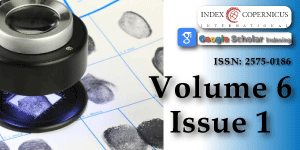Genetic identification of three exhumed human remains at a hospital in Ghana: a forensic case report
Main Article Content
Abstract
DNA identification is very important in cases of high decomposition of dead bodies, in which the bodies cannot be identified by physical means.
To compare the results of DNA typing, it is necessary to have related subjects with which to perform comparative analyses. Such tests are normally performed by comparing DNA profiles from people known to be immediate family members of the presumptive victim, such as parents or children because they share half of their genetic material with the unidentified.
We report on how DNA analysis was used to solve a case of mixed-up bodies at a local mortuary in Ghana, West Africa. Two families and three buried human remains were in contention in this case. The first body (E9) was buried three months before exhumation. The second body (E11) was buried two and a half months before exhumation whiles the third body (E10) was buried a month before exhumation. Exhibit E5 was taken from an alleged child of the deceased, E11. Toenails of the exhumed bodies were sampled by a pathologist and used for DNA extractions using the QIAamp DNA Investigator Kit.
Profiles from relatives were generated for comparison purposes. All samples gave a quality amount of genomic DNA after quantification. DNA was amplified with a GlobalFiler PCR amplification kit. Profiles from relatives were generated for comparison purposes.
The human remains (exhibit E11) cannot be excluded as the biological father of the child (exhibit E5) because they share common alleles at all 23 genetic loci. The applicable combined paternity index was 17218125604.492 assuming a prior probability of 0.5. The probability of paternity is 99.99999999%. Based on this relationship testing, one of the bodies was successfully identified and handed over to the family for re-burial.
Article Details
Copyright (c) 2022 Afrifah KA, et al.

This work is licensed under a Creative Commons Attribution 4.0 International License.
Hebda L. DNA Isolation and Analysis from Skeletal Remains: Evaluating the Utility of Soil DNA Extraction Kits. Michigan State University. Forensic Science. 2013.
Claridge J. Exhuming a Corpse for Forensic Analysis. 2016. http://www.exploreforensics.co.uk/
Drobnic K. PCR Analysis of DNA from Skeletal Remains in Crime Investigation Cases. In Problems of Forensic Science, Special issue: Second European Academy of Forensic Science Meeting, Cracow. 2001; 46: 110-115.
Truong L, Park HL, Chang SS, Ziogas A, Neuhausen SL, et al. Human Nail Clippings as a Source of DNA for Genetic Studies. Open J Epidemiol. 2015; 5: 41-50. PubMed: https://pubmed.ncbi.nlm.nih.gov/26180661/
Hogervorst JGF, Godschalk RW, van den Brandt PA, Weijenberg MP, Verhage BA, et al. DNA from nails for genetic analyses in large-scale epidemiologic studies. Cancer Epidemiol Biomarkers Prev. 2014; 23: 2703-2712. PubMed: https://pubmed.ncbi.nlm.nih.gov/25472680/
Primorac D, Andelinovic S, Defi ni-Gojanovic M, Drmic I, Rezic B, et al. Identification of war victims from mass graves in Croatia, Bosnia, and Herzegovina by the use of standard forensic methods and DNA typing. J Forensic Sci. 1996; 41: 891-894. https://bit.ly/3fdZyK
ICRC. Missing people, DNA analysis and identification of human remains: A guide to best practice in armed conflicts and other situations of armed violence. 2nd edition 15-25. 2009. https://bit.ly/2KYtNqD
Afrifah KA, Boateng AB, Akomeah SA, Motey EE, Abban EK, et al. Missing Persons Identification: Genetic profiling of highly charred human remains using sixteen STR loci markers. Forensic Sci Today. 2020; 6: 016-019. https://www.peertechzpublications.com/articles/FST-6-117.php
Marjanović D, Metjahić HN, Čakar J, Džehverović M, Dogan S, et al. Identification of human remains from the Second World War mass graves uncovered in Bosnia and Herzegovina. Croat Med J. 2015; 56: 257-262. PubMed: https://www.ncbi.nlm.nih.gov/pmc/articles/PMC4500967/
Afrifah KA, Badu-Boateng A, Antwi-Akomeah S, Motey EE, Boampong E, et al. Forensic identification of missing persons using DNA from surviving relatives and femur bone retrieved from salty environment. J Forensic Sci Med. 2020; 6: 40-44. https://bit.ly/3dhZdo4
Badu-Boateng A, Twumasi P, Salifu SP, Afrifah KA. A comparative study of different laboratory storage conditions for enhanced DNA analysis of crime scene soil-blood mixed sample. Forensic Sci Int. 2018; 292: 97-109. https://bit.ly/3fuQ11M
Gaudio D, Fernandes DM, Schmidt R, Cheronet O, Mazzarelli D, et al. Genome-Wide DNA from degraded petrous bones and the assessment of sex and probable geographic origins of forensic cases. Sci Rep. 2019; 9: 8226. https://go.nature.com/2WGe5Gk
Hares DR. Selection and Implementation of Expanded CODIS Core Loci in the United States. Forensic Sci Int Genet. 2015; 17: 33-34. Link: https://bit.ly/2WtBEln
Brenner CH. Fundamental problem of forensic mathematics – the evidential value of a rare haplotype. Forensic Sci Int Genet. 2010; 4: 281-291. PubMed: https://pubmed.ncbi.nlm.nih.gov/20457055/

